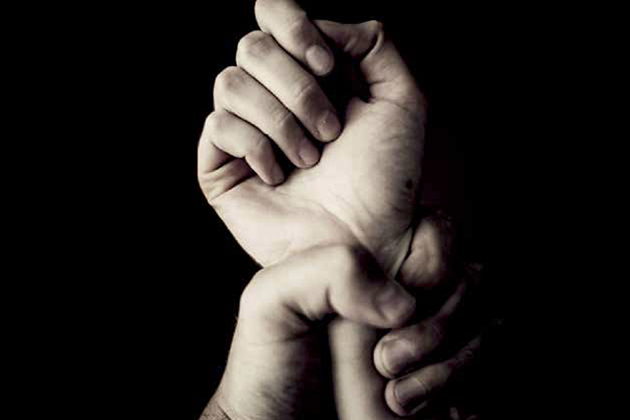At the opening session of the Commission on the Status of Women in New York today, United Nations Secretary General Ban Ki-moon noted that progress on gender equality remains “unacceptably slow,” and a UN analysis just released has found that violence against women and girls worldwide “persists at alarmingly high levels.”
Just how the law, both international and domestic, protects women against violence is explored by UConn researcher David Richards in a new book, Violence Against Women and the Law (Paradigm Publishers 2015).
In the book Richards, an associate professor of political science who co-founded the largest human rights database in the world more than a decade ago, provides a new set of analyses and scores focusing particularly on domestic laws protecting women against violence in 196 countries around the globe.
Richards and coauthor Jillienne Haglund, a post-doctoral researcher at Washington University in St. Louis, looked at domestic laws in effect during the years 2007-2010. They rated laws addressing four types of gender-based violence: rape, domestic violence, sexual harassment, and marital rape.
The authors looked not only at the presence of laws, but how they were used; how legal protections are related to economic, political, and social institutions; and whether international law drives the enactment of domestic legal protections.
A sequence of violence
Richards’ analyses show that almost all countries have some guarantee against rape, followed in sequence by domestic violence, sexual harassment, and finally marital rape, which was the least likely to be prohibited.
However, he also found that even though many industrialized nations have strong laws regulating domestic violence, some have conspicuously few regulations on sexual harassment in the workplace.
When you look at the number of ways that violence is perpetrated against women, combined with the frequency of that violence, and then you look at the economic toll and the health toll, individually and collectively, it’s terrible on every level. — David Richards
“We found in a lot of industrialized democracies that sexual harassment was the last of the four types to be legally prohibited in public and private places,” says Richards. “Likely, the last thing wealthy countries want to do is regulate the marketplace. They’ll regulate what goes on in a household before they put any regulations on employers.”
Richards’ work also shows that the presence of women in the legislature makes a country more likely to have laws protecting women from violence. To those who study American politics, he says, this might not seem surprising, but internationally, it’s heartening.
“In American politics it’s understood that women legislators do legislate on behalf of women’s issues, and will represent their gender in law,” Richards explains. “But internationally, there’s an argument that the bulk of the women who end up in legislatures are elites, that feminists are weeded out at the level of nominations, and so there’s not a process where women significantly affect the creation of legislation such as that aimed at gender-based violence.”
Respecting international laws

Similarly, international human rights laws have been criticized as having no effect on individual countries’ domestic laws. But, for example, Richards found that states party to the Convention on the Elimination of All Forms of Discrimination Against Women (CEDAW) are also more likely to have established full prohibitions on domestic violence. In a recent essay he notes that the USA remains among a select few countries not to be party to CEDAW.
“At this moment there are prominent scholars making the case that international human rights law doesn’t work,” he says. “And there are others of us that strongly make the case that it does.”
International funding organizations like the World Bank often use data like Richards’ in their decisions to allocate development assistance funding: they want to give money to places that are not human rights abusers, Richards notes, so getting a good score on his metrics can carry direct economic benefits.
And certainly Richards’ data from the book only scratches the surface, he readily admits; although his data assess the strength of laws, the way laws are interpreted by courts and enforced (or not) by law enforcement officials on a daily basis provide a steep measurement challenge that was beyond the scope of the book.
For now, he hopes his work will help scholars look more closely at the effects of international law on domestic law, and will help spur conversations about how best to systematically audit the legal behavior of governments related to violence against women.
“When you look at the number of ways that violence is perpetrated against women, combined with the frequency of that violence, and then you look at the economic toll and the health toll, individually and collectively, it’s terrible on every level,” he says.
“So, what do you do about it?” he asks. “The one thing I know how to do is to tell stories with numbers, so that’s what I do.”
Read more about Richards’ book and its findings in his recent Washington Post “Monkey Cage” article.




